Famous Landmarks in South America
Are you looking for the famous landmarks of South America? Look no further as this list has all the South America landmarks and natural wonders of South America.
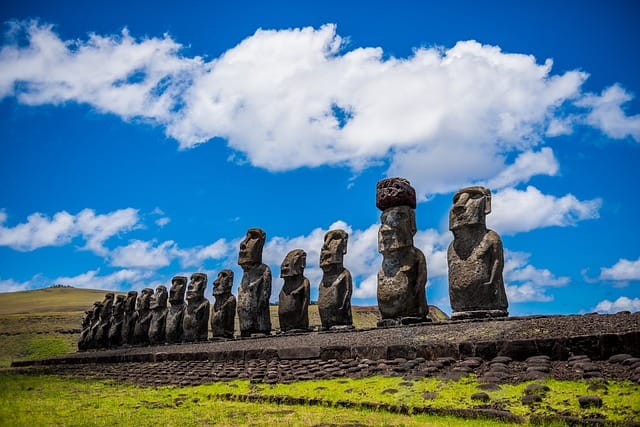
I had the chance to visit all of these famous South America Landmarks on my last trip and I can highly recommend them! You need to see these famous South American landmarks for yourself!
15 Famous Landmarks South America
Salar de Uyuni
Location: Uyuni, southwest Bolivia.
Salar de Uyuni is the largest salt flat in the world, at almost 4,000 square-miles in area. This salt flat was formed as a result of several prehistoric lakes drying up.
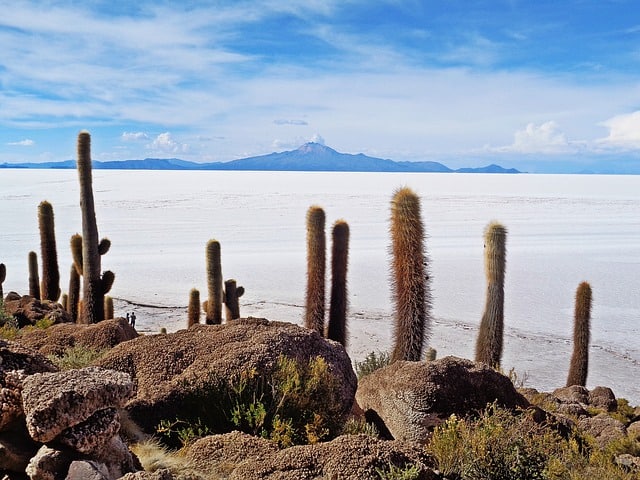
It is possible to do one-day tours of the area, the best way to experience the Salar is through a multi-day tour where a guide takes you deep into the Altiplano. This is the best way to see and experience the iconic salt flat of Bolivia. The salt flats are accessible year-round.
Visiting during winter months has benefits of being able to access more of the salt flats due to the area being completely dry. While, visiting during the summer months has benefits of the area being coated in water so there is a beautiful mirror reflection of wonderful colours. However, due to the layer of water, not all of Salar is accessible.
Iguazu Falls
Location: Brazil/Argentina Border
The Iguazu Falls is the largest waterfall in the world located along the Brazilian and Argentinian border. The waterfall divides the water flow from the upper and lower Iguazu.
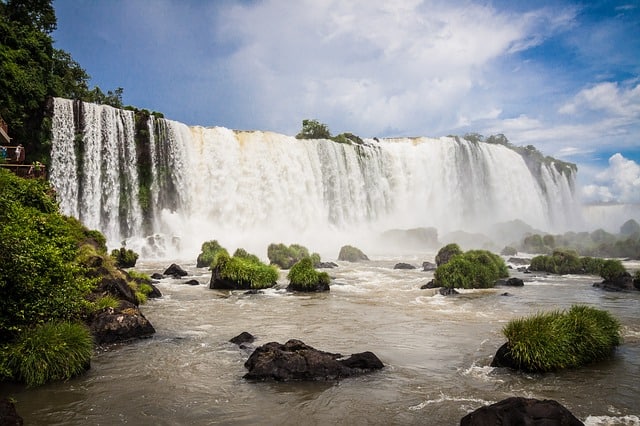
The majority of the river portion flows through the Brazilian side of the border while the falls are mostly on the side of Argentina. There are over 270 drops to the fall and the longest drop falls at 270-feet. The falls are a gorgeous site and well loved by many people all over the globe.
In 2012, they were voted among millions to be included as part of the new 7 wonders of the world. The Iguazu Falls are accessible through multiple entrances in Brazil, Argentina and Paraguay. The Iguazu National Park and the Iguacu National Park share land with the falls and were named as UNESCO World Heritage Sites in the mid-1980s to protect the land and the falls.
Perito Moreno Glacier
Location: Santa Cruz Province, southwest Argentina.
The Perito Moreno Glacier is a 97 square-mile ice formation, the third largest freshwater reserve in the world. The Glacier is one of the most important, most beautiful and most visited tourist attractions in Argentina.
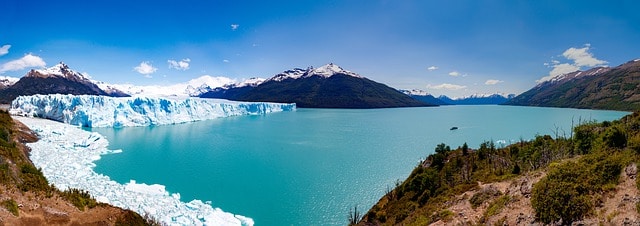
There’s a large visitor center for tourists to learn all there is to know about the glacier as well as having great views over the south and east-facing edge of the glacier. There are also multiple companies offering daily tours of the glacier. Making it easy to fit into your schedule. T
his glacier is undeniably beautiful and a must-see sight for anyone visiting South America, specifically Argentina.
Mount Fitz Roy
Location: Patagonia Region. Argentina, Chile Border
Located in the Glaciares National Park, the rugged peaks of Mount Fitz Roy can be seen from miles away and is one of the most iconic sights of Patagonia.
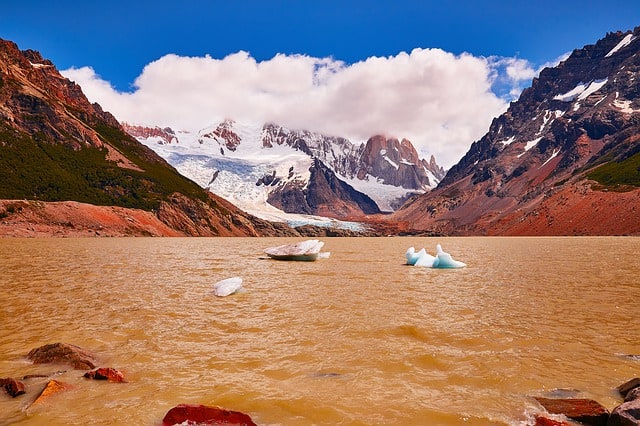
The mount was first discovered by a group of Europeans in the late 1700s and has been a popular tourist destination ever since. This mountain remains to be one of the most technically difficult mountains to climb in the world after the first successful attempt in 1952.
Many tourists to the area might not be brave enough to attempt the climb to the summit, however, it is still a popular spot for hikers and those that are just interested in the beautiful sight of Mount Fitz Roy.
Machu Picchu
Location: Cuzco Region, south Peru.
This could arguably be the number one attraction in South America, with over 1 million visitors each year. Dating all the way back to the 15th century, Machu Picchu is located on an 8,000-feet mountain ridge with iconic views.
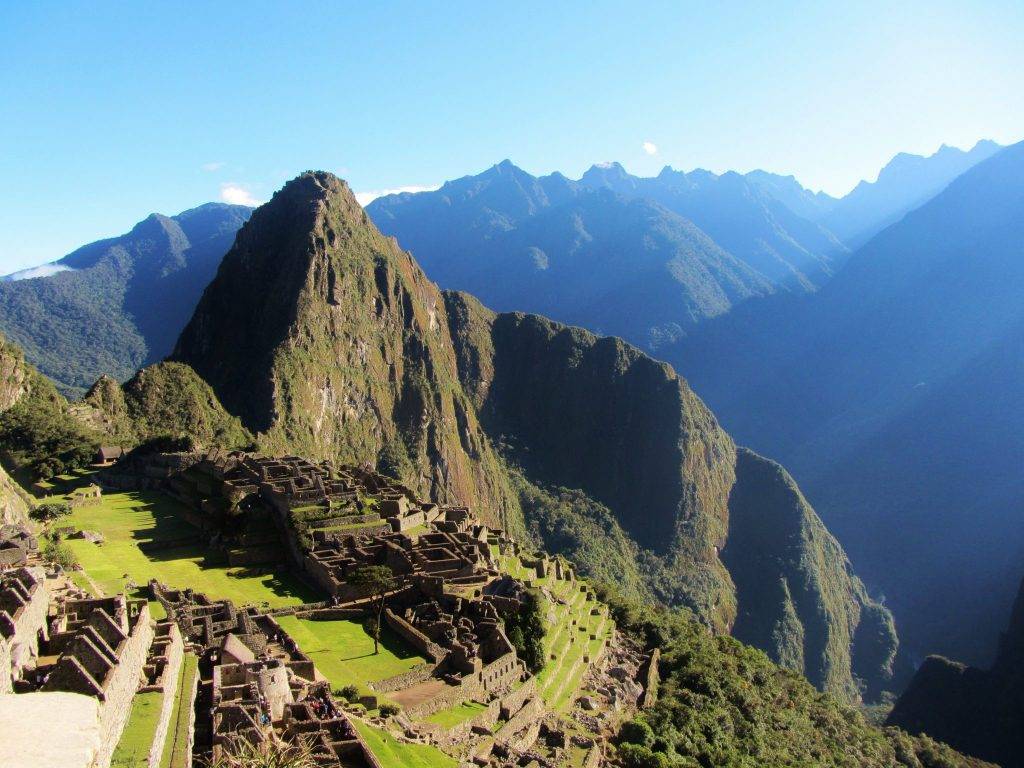
The lush greenery with remains of ancient pre-Colombian towns make for a beautiful sight over the entire journey from beginning to the summit of Machu Picchu. The hike through, takes visitors through the wet Yungas Woods and many more ancient civilian towns making the trip both visually pleasing and filled with long rich history.
Machu Picchu was originally believed to have been constructed to be an estate for the Inca Emperor and is still centuries later as the most iconic and most familiar part of the Inca history. Machu Picchu has both the beautiful views and deep historic meaning leading it to be a must-see sight in South America.
Las Lajas Sanctuary
Location: Ipiales, Narino, Columbia
This Roman Catholic Church was built in the 1900s and took a total of 33 years to complete. It’s a beautiful building, influenced by the gothic style. Due to the style of the design, the building gives the feeling of ancient English castles with the illusions it has been around centuries.
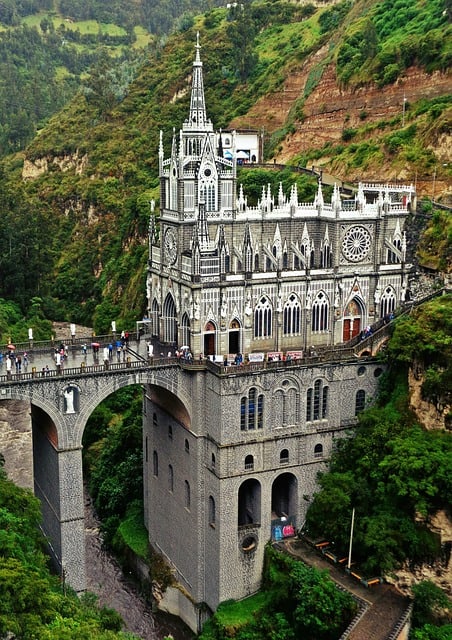
However, this romantic castle-like church in a canyon between Columbia and Ecuador has only been around for around 100 years. The church even has urban legends rooted in it’s history making many visitors of the church believe it has special healing powers for those that are in need.
This church is a beautiful sight and something unlike anything else in the area, it sure is a must-visit while in Columbia.
Christ the Redeemer
Location: Rio De Janeiro, Brazil
Along with Machu Picchu, Christ the Redeemer is arguably the most famous landmarks in, not only South America but around the globe too. This 125-foot high, 92-feet wide soapstone sculpture is visited by over 2 million people a year. The monument is not only a cultural icon to the City of Rio De Janeiro and Brazil, but it is also a great symbol of Christianity to people all over the world.
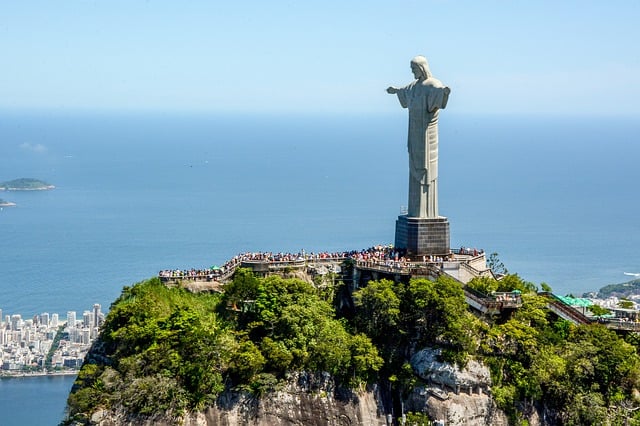
The sculpture is located atop a mountain, 2,300-ft tall overlooking the entire city. It may take a lot of walking up hills to get there, as well as large crowds everywhere your turn; but visiting Christ the Redeemer is atop almost every to-do list while in the city. The views are incredible and getting to see this magical sculpture up close, is equally as amazing.
Angel Falls
Location: Canaima National Park, Boliviar State, Venezuela.
One of the most beautiful places in South America but also one of the lesser known landmarks on the continent. Angel Falls is the tallest uninterrupted waterfall in the world and is an absolute gorgeous sight, definitely worth the trek to get there!
Located in the tropics Canaima, and protected by dramatic mountains, it is difficult to reach but the 3,200-ft waterfall with never be a disappointment. The national park that the waterfall is located within is an UNESCO World Heritage Site, ensuring the protection and preservation of both the national park, and this stunning waterfall.
Although the difficulty to get to the falls, it still remains as being one of the top tourist attractions in Venezuela, attesting to remarkability of the falls and how truly unmissable it is one any trip to the nation.
Nazca Lines, Peru
Location: Nazca Dessert, Southern Peru
The Nazca Lines are among other mysterious symbols left behind from the ancient times of pre-Columbian south America.
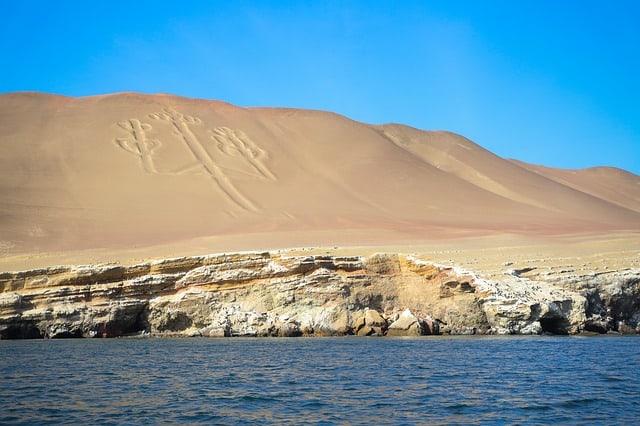
This landmark includes a series of lines carved into the ground, with the meaning and intentions still unknown. Many professionals have theorized as to the purpose of these lines, while the most common belief is that the Nazca people wanted to be seen by people higher up, in the sky. They still remain a wonder and still bring in large masses of people each year to view the mysterious lines.
The Nazca lines are best viewable from above, flying over is the only way to truly see and appreciate the art piece in its entirety. There are local companies who offer tours of the area.
Easter Island “Moai’s”
Location: Easter Island
There are almost 1,000 Moai located on Easter Island! these statues average a height of 13-feet and weigh an average of 14-tonns. They were carved between the 13th and 16th centuries and transported from one part of the island to another. During this time, the construction and transportation of these large statues was an impressive action.

The statues are of full bodies; however, the heads are disproportionately large, leading to many popular culture literature to refer to the Moai’s as the heads of Easter Island. Many researchers believe the symbolism of these Moai were to represent both political and religious power and authority. Easter Island is one of the most remote and inhabited islands in the world and belongs to the South American nation, Chile.
The island is accessible and often times is reasonably affordable. If ever in Chile, it would be well worth a multi-day trip to Easter Island to see these majestic sculptures.
The Equator
Location: Ciudad Mitad del Mundo, Quito, Ecuador
Ciudad Mitad del Mundo, also known as the middle of the world is where locals and visitors to Ecuador can stand atop the Equator. The Equator is an imaginary line that runs through the center of the world, separating the world into the Northern and Southern Hemisphere. At this location, there is the Monument of the Equator which sits atop the exact location of the Equator.
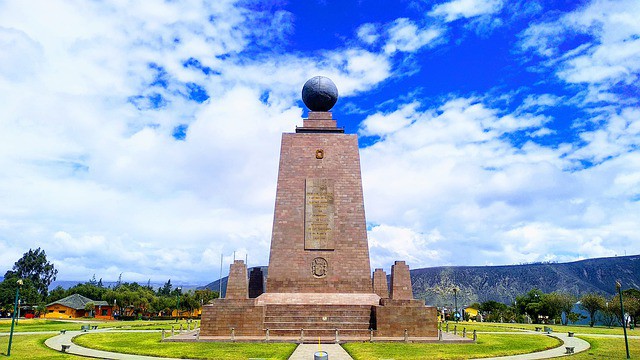
The monument was constructed in the late 1970s to early 1980s and brings in large amounts of people annually who are all eager to stand upon the line dividing the world into its two hemispheres. There is even a yellow line painted along the ground which demonstrates the imaginary line of the equator. This is a unique experience, only able to be experienced in Ecuador, so no wonder it’s a popular activity to do in the nation.
Atacama Desert
Location: Northern Chile
The Atacama Desert lies on a 1,000km strip of land between the Andes mountain range and the Chilean coast range. This location prevents any moisture from the Pacific Ocean to reach it, enabling it to be the driest desert in the world. Parts of the desert have never even experienced rainfall! On occasion, there have been large rainfalls over parts the desert which occur once every few years. The aftermath of these rainfalls typically results in fields of wildflowers to bloom.
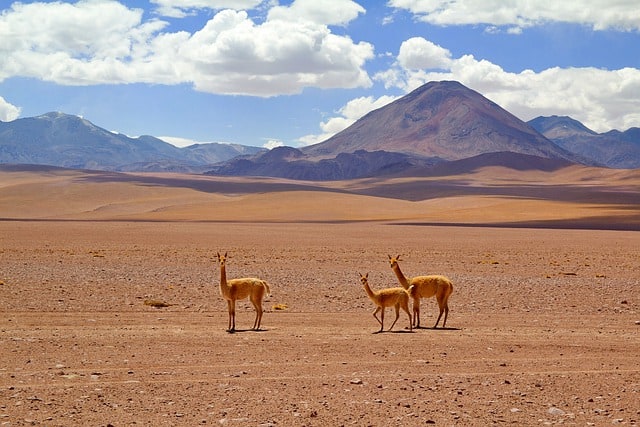
The Atacama Desert is far from any other typical isolated desert, Atacama is full of life and wonderful sights. There is a large diversity of life in all forms in the Atacama Desert, despite it being the driest in the world. There are villages, wildlife and plant life. This is a unique dessert to any other and will not disappoint any visitor. The desert is also stunning upon arrival and every aspect explored provides more beauty. Be sure to bring a camera because the Atacama desert is very photogenic.
Conclusion: Top Landmarks in South America
I hope you have enjoyed this list of South American landmarks. I also have a post on the safest countries in South America that talks about each of these countries in more detail.
Sharing is Caring! Pin this article to save for later.
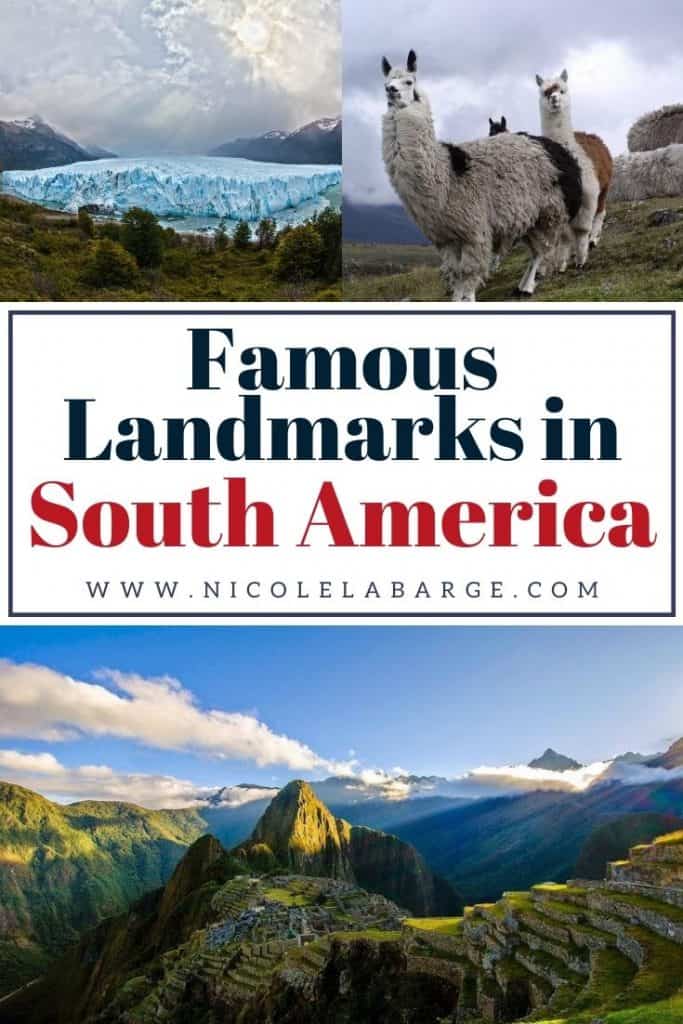
Recent Posts
Welcome to the enchanting world of Óbidos, a medieval gem nestled in the heart of Portugal. If you are wondering what to do in Obidos, you are in the right place. This list of best things to do in...
15 Best Things to do in Nazare: Guide to Portugal's Surf Paradise
Embracing Nazaré’s Coastal Charm Nestled along Portugal's Silver Coast, Nazaré is a picturesque fishing village that has recently soared in popularity, not just for its rich history but for...
